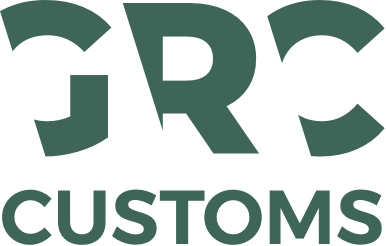GRC Customs’ vision on Customs Compliance in a Digital World
In the dynamic world of Governance, Risk, and Compliance, adherence to a framework or standard rarely exist as individual concepts. A thorough examination of the AEO file reveals that a significant number of norms intersects with other frameworks as well. It is only logical to interconnect these and considerer the broader picture. The upcoming AEO conference in China in May will shed light on related topics such as digitization and sustainability. Emphasizing the shift towards a holistic approach to compliance in general and, consequently, customs compliance.
The Changing Worlds of Customs: Trust & Check Traders
In 2023, the European Commission announced its plan for a drastic ‘customs reform’. This reform targets a more intelligent and modern approach to customs controls, because it placing renewed collaboration between businesses and governments at its core. The ultimate goal is the simplification of customs obligations and processes, leading to substantial cost savings for both companies and customs authorities. However, companies are hardly intrinsically motivated to visibly comply with customs legislation, as a business case is often lacking. Compliance is frequently perceived as a cost and a burden. The business case must therefore be shaped, among other factors, by the financial benefits derived from automated data submission. Additionally, linking to other frameworks and standards can significantly enhance acceptance throughout the organization. This aligns well with the motivation behind the reform, which goes further than cost savings. The EU aspires to integrate risk management at European level, emphasizing the enforcement of comprehensive EU standards, including the fight against climate change.
GRC Customs’ Role in Compliance: From Tool to Framework
GRC Customs owns an advanced tool, originally launched as an AEO compliance tool, incorporating specific elements to assist organizations in complying with legislation and maintaining compliance. The foundation includes risk assessments, internal controls, audits, and incident recording. The Tax and Customs Control Frameworks within the tool offer a structured approach to compliance. It distinguishes itself from other audit tools by integrating the content of these frameworks and their connections into the tool, therefor saving significant implementation time.Trade compliance, CTPAT, and ISO will soon be incorporated into the AEO Compliance Tool, expanding GRC Customs’ capacities. The name ACT will be replaced, with a new name. Soon to be launched by our sister company, GRC4U. These expansions undermine the need for a comprehensive approach to compliance, encompassing not only customs legislation but also broader norms and certifications. The underlying vision focuses not only on regulatory compliance but on its purpose.
Conclusion: GRC Customs and the Comprehensive Landscape of Compliance
In short, GRC Customs emphasizes the importance of a comprehensive, holistic approach to compliance in a rapidly evolving world. By anticipating customs reforms, cybersecurity challenges, and sustainability goals, GRC, along with GRC4U, positions itself as a strategic partner for companies embracing not only customs legislation but also the broader compliance landscape.
